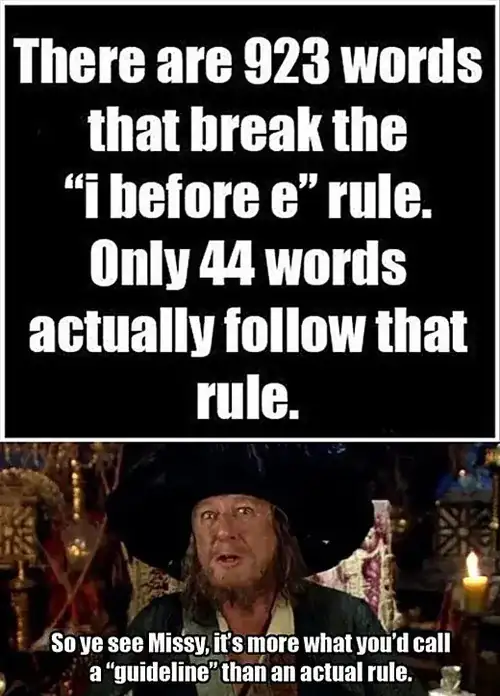It won't be possible to skeptically analyze whether or not the rule is useful. I will stick to analysis of the factual claim. I'm assuming that the "i before e" rule is exactly as you've quoted from the Wikipedia article.
The claim in the image is false.
In the Oxford English Dictionary, there are 8161 words that involve the letters i and e adjacent to each other.
To follow the rule, they would have to occur in the order "ie", unless they are preceded by the letter "c", in which case they must occur in the order "ei".
- Words that have ie, not after c (ambience, achieved): 5232
- Words that have cei (apperceive, ceiling): 182
To break the rule, they would have to occur in the order "ei" without being preceded by a "c" or appear in the order "ie" while being preceded by a "c".
- Words that have ei, not after a c (abaeile, abeigh): 2423
- Words that have cie (abortifacient, ancient): 384
So, among all ei or ie words in the Oxford English Dictionary, 5414 words follow the rule of thumb, and 2807 break the rule.
EDIT: The picture is similar when taking word frequency in to account. In a list of "the top 5,000 words in American English":
Those that follow the rule:
- Words that have ie, not after c: 72
- Words that have cei : 6
Those that break the rule
- Words that have ei, not after a c: 19
- Words that have cie: 10
So, among these most frequent words there are 78 supporting the rule, and 29 against.
